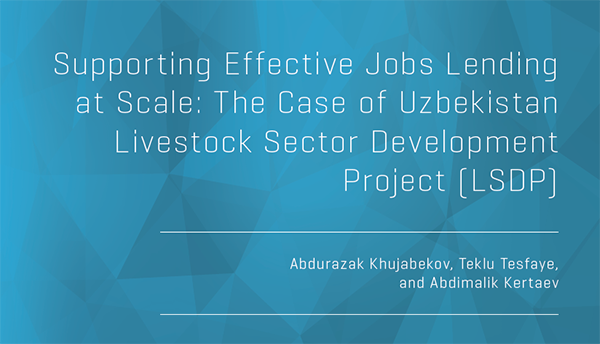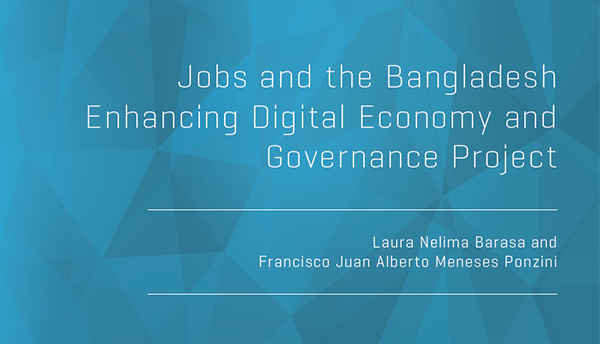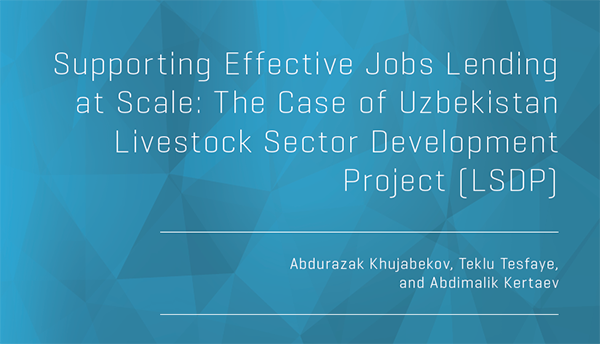A key rationale of many development interventions is to boost economic activity and productivity and generate more and better jobs.
The reasons are clear:
- Most poverty reduction occurs through rising labor incomes and
- Labor is a motor for an economy that grows, reinvests, and generates broader opportunities.
Often, the more sizeable jobs impacts are those that are indirect rather than direct: they occur beyond the entities directly impacted by an intervention. The employment impacts of economic reforms, investments in infrastructure, financial systems, skills, the environment, governance and regulatory systems, and other public goods are almost by definition indirect. Yet these economic benefits, critical to development and poverty reduction, are typically neither factored into the design of many potential interventions nor in their prioritization. This is in part because of difficulties in measuring the impacts of jobs.
Improving our ability to measure jobs impacts more fully and accurately can enable better prioritization of policy and investment effort, inform more comprehensive monitoring and evaluation and, in relevant cases, support dialogue around potential policy reforms. All told, a key step in setting better jobs policies is to measure these impacts.
OUR APPROACH TO INDIRECT JOBS MEASUREMENT
The Jobs Group has led and collated efforts to estimate indirect jobs impacts, both under the Let’s Work Program and a pilot program under an IDA19 policy commitment. This experience shows that with a well-defined intervention, reflected in a jobs-focused theory of change (JToC), and data on the relevant jobs outcome(s) either at baseline or endline, it is usually possible to estimate jobs impacts.
The JToC’s, data circumstances, timing, and other variables will vary from case to case. So, rather than a standardized method, we outline a structured, transparent decision framework to arrive at the method best suited to the purpose and situation of each case. The Toolkit below discusses the key decision variables and the methods available. The Summary Report (forthcoming) on the recent wave of pilot estimations also describes the main methods in less technical terms, outlines feasibility limits, and discusses reliability issues for the methods used.
Key Outputs
| Issue | Title | Year | Main Sector | Methodology | Country | Region | World Bank Income Group |
|---|---|---|---|---|---|---|---|
| 1 | Jobs and the Bangladesh Enhancing Digital Economy and Governance Project | 2023 | Skills development and ALMPs | Economic Estimation and Extrapolation | Bangladesh | South Asia | LMIC |
| 2 | Uganda – Investment in Forests and Protected Areas for Climate- Smart Development Project | 2023 | Resource preservation and conservation | SAM-based | Uganda | Sub-Saharan Africa | LIC |
| 3 | Supporting Effective Jobs Lending at Scale: The Case of Uzbekistan Livestock Sector Development Project (LSDP) | 2023 | Agriculture | Qualitative | Uzbekistan | Europe and Central Asia | LMIC |
| 4 | Measuring the jobs effects of footbridge access interventions: an application in Lesotho | 2024 | Infrastructure | Econometric Estimation and Extrapolation | Lesotho | Sub-Saharan Africa | LMIC |
| 5 | Measuring the effects of social protection programs on job creation: an application in Angola | 2024 | Social Protection | Econometric Estimation and Extrapolation | Angola | Sub-Saharan Africa | LMIC |



